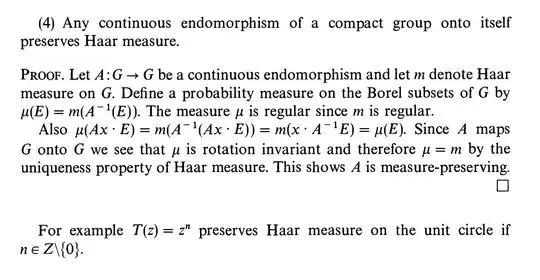The following is from Walters' Ergodic Theory book :
I have studied Measure Theory but I have no knowledge of Haar measure more than what I know from here. I can't understand some parts of the proof of Theorem (4) and its following example for that :
1- Why $m$ is regular? (the answer is in this theorem below which I couldn't prove it) :
(any easy for self-study reference for proving Theorem 0.13 including a friendly introduction to Haar measure would be much appreciated)
2- How regularity of $m$ implies regularity of $\mu$?
3- How $m(A^{-1}(Ax • E)) = m(x • A^{-1} E)$ holds? (I know $m(x • E) = m(E)$.)
4- How $T(z)=z^n$ is measure preserving? Roughly speaking $m(T^{-1}(B))=m(B)$ is not consistent with what happens with $T$ which 'expands' sets by a factor of $n$ for example intervals on a unit circle so not a measure preserving.

